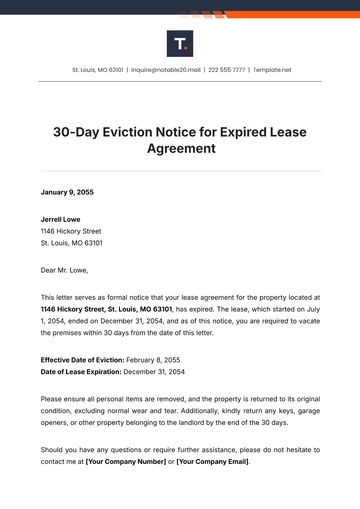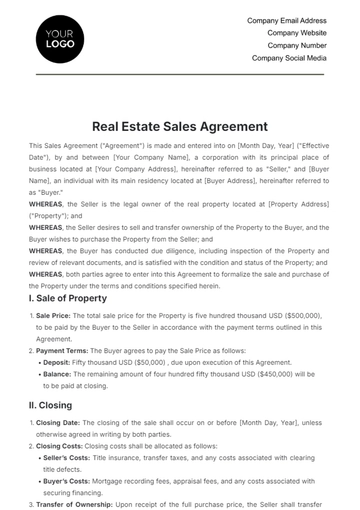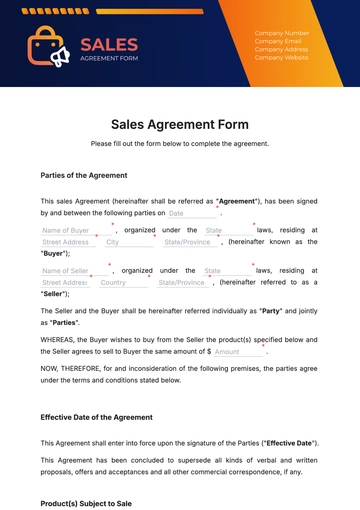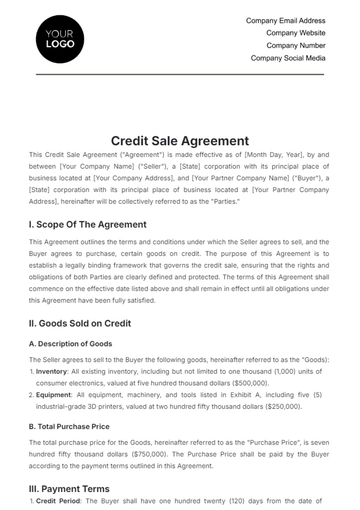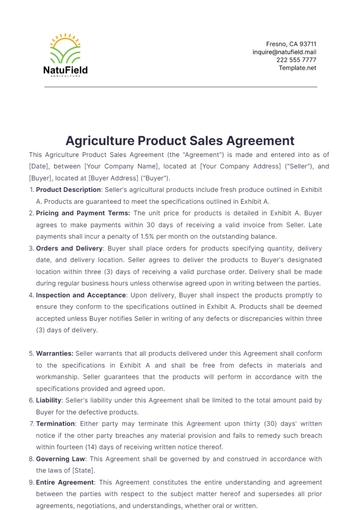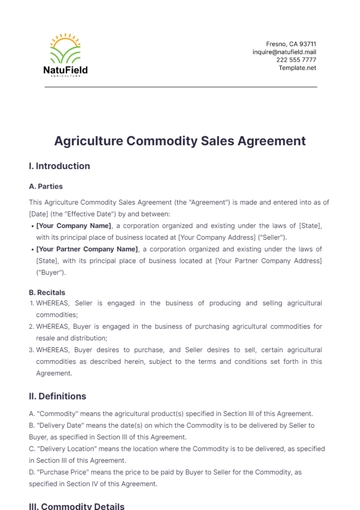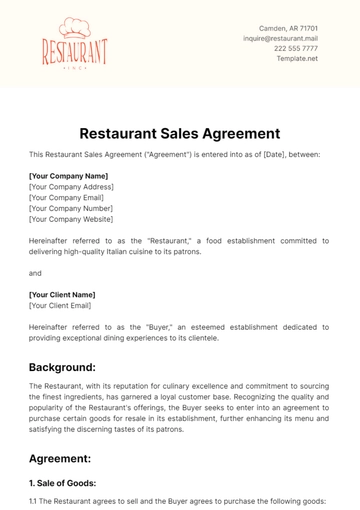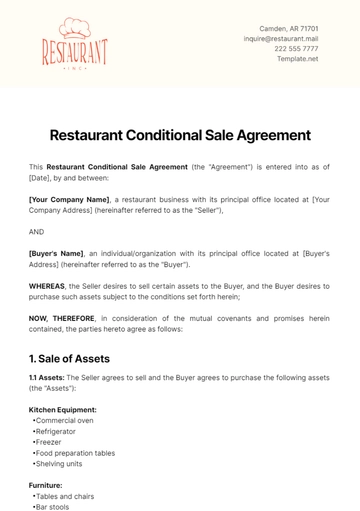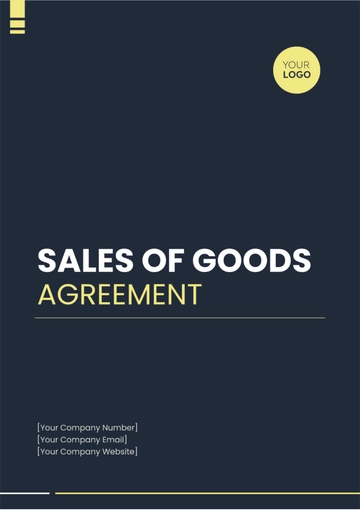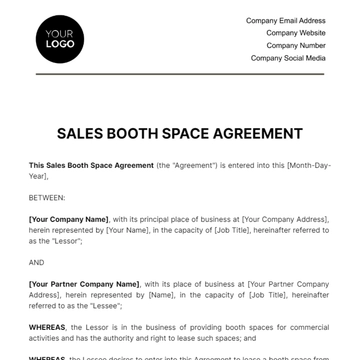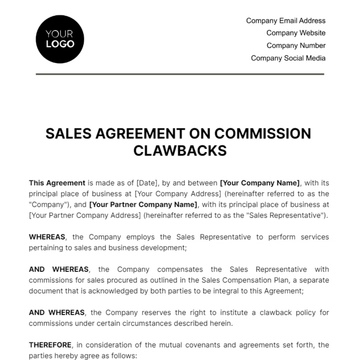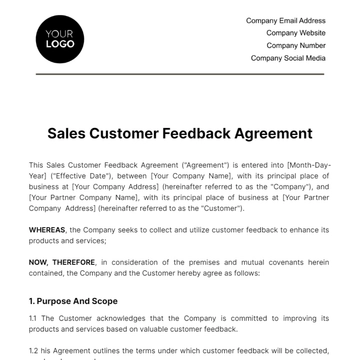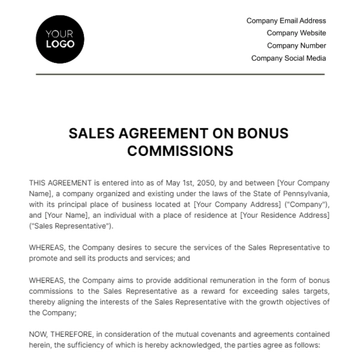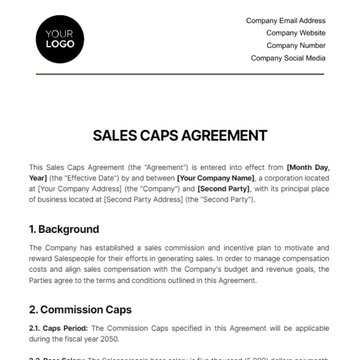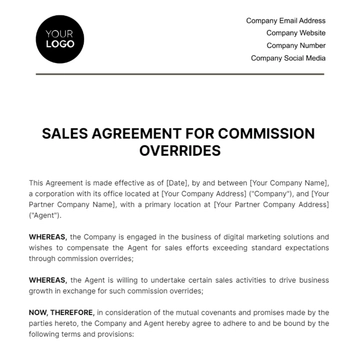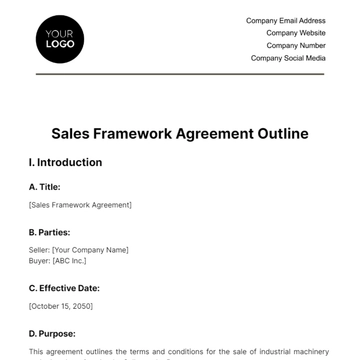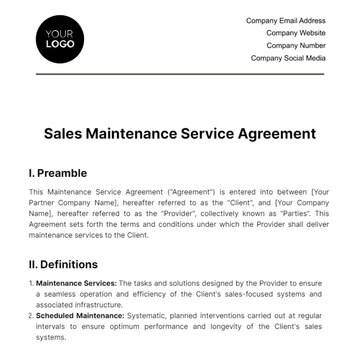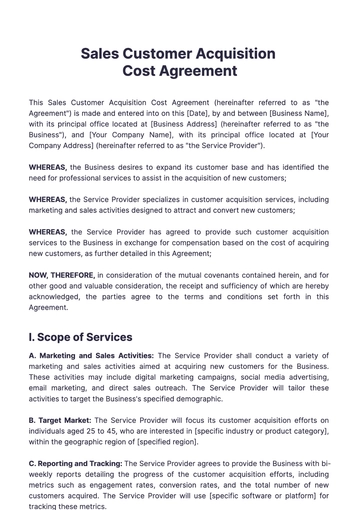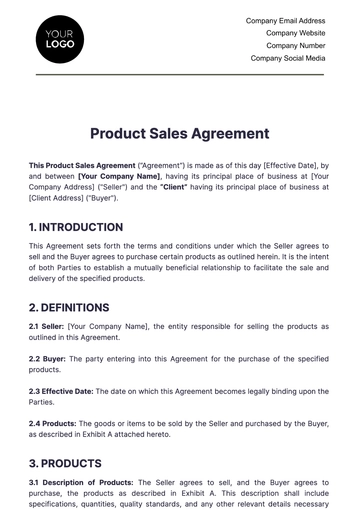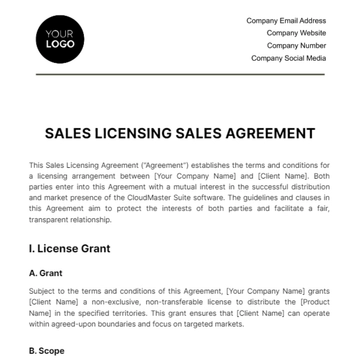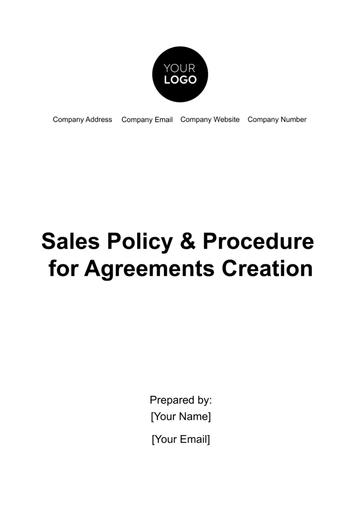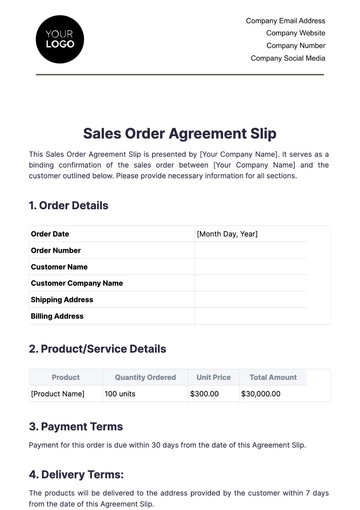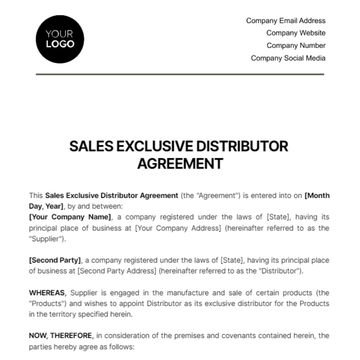Free Sales Guide for Quick Understanding of Agreements
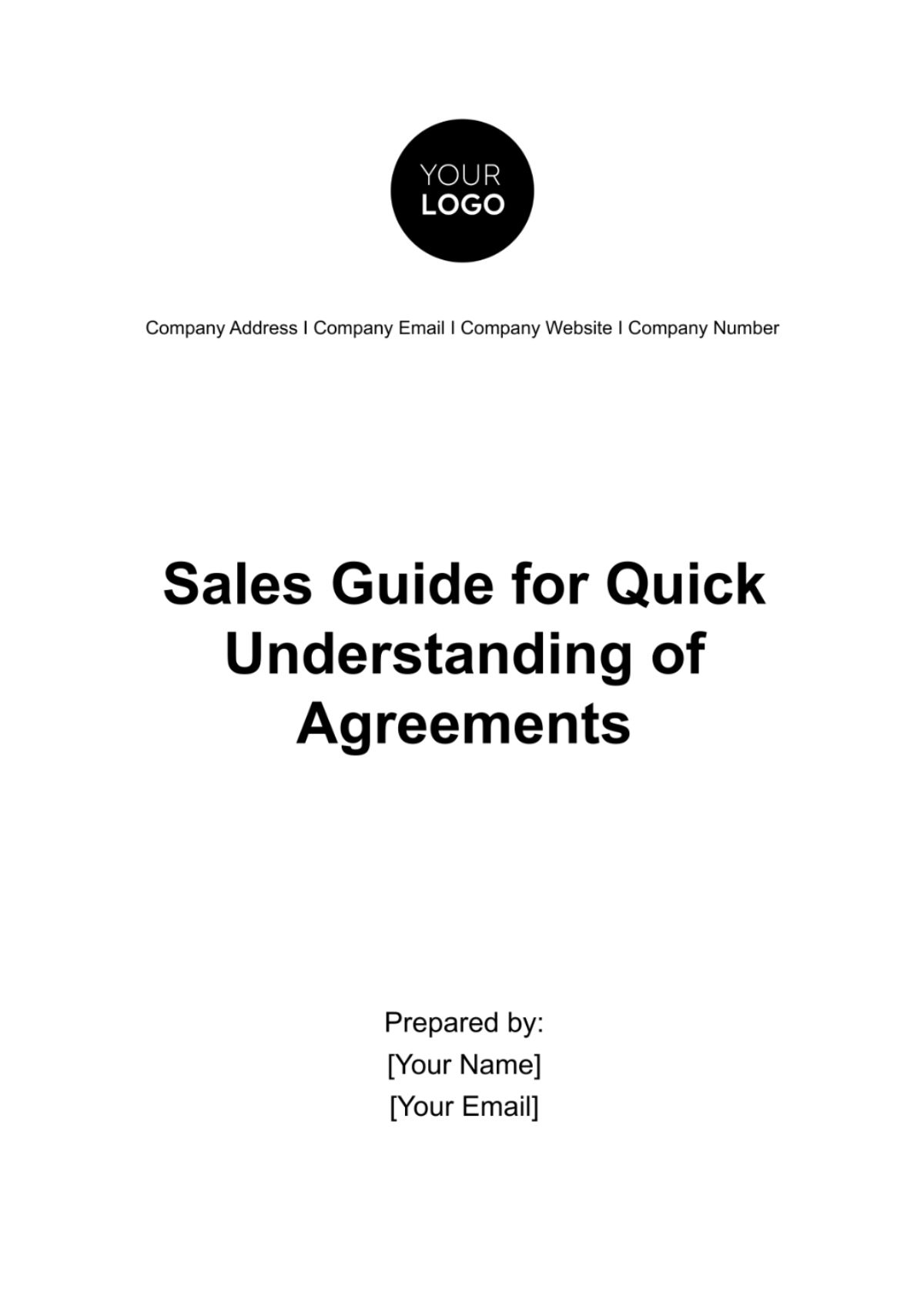
Agreements are the cornerstone of successful business transactions. This pamphlet aims to provide you with a clear and concise understanding of how agreements work and what you need to know to create and manage them effectively. Whether you're a seasoned professional or new to the world of agreements, this guide will help you navigate the complexities and make informed decisions.
Why Agreements Matter
Agreements are the bedrock of successful business interactions, encompassing pivotal roles that extend far beyond the confines of legal documents. They serve as the silent architects of collaboration, essential in shaping and securing business dealings. Here's why agreements matter:
Clarity: Agreements serve as the beacon of clarity in the often complex labyrinth of business arrangements. By meticulously defining the terms and conditions of a deal, they cut through the fog of ambiguity, ensuring that all parties involved are on the same page, speaking a common language of understanding.
Protection: Like the guardians of a medieval fortress, agreements stand sentinel to safeguard the interests and rights of those who venture into the realm of business. With precision, they spell out responsibilities, rights, and the intricate map for resolving disputes, serving as a fortress of legal protection that provides assurance and peace of mind.
Compliance: In an ever-evolving business landscape, agreements act as the compass guiding all parties toward adherence to industry regulations and standards. They offer a structured framework that promotes accountability, ensuring that operations stay within the bounds of legality, and ultimately, industry best practices.
Relationship Building: Beyond their legal prowess, agreements are the artisans of trust, forging the cornerstone of strong, enduring business relationships. When well-crafted and diligently executed, agreements build trust, inspire confidence, and pave the way for collaborative efforts that extend far into the future.
Key Components of Agreements
Agreements come in various forms, but they generally include:
Parties Involved
Scope of Agreement
Terms and Conditions
Rights and Responsibilities
Termination and Exit Clauses
Dispute Resolution
Confidentiality
Signatures
Agreement Structure
A well-structured agreement is the cornerstone of successful business dealings. Here's a detailed breakdown of the structure:
Title: A clear and concise title that encapsulates the agreement's purpose. It should instantly convey what the agreement is about, providing clarity from the outset.
Introduction: An opening section that sets the stage for the agreement. It introduces the parties involved and provides a brief contextual background, helping all parties understand the why and how of the agreement.
Scope of Work: This is the heart of the agreement, offering a comprehensive and detailed description of what each party is responsible for. It outlines the tasks, deliverables, milestones, and any specific requirements.
Payment Terms: In this section, the financial aspects are delineated. It specifies how and when payments will be made, including the amount, method of payment, invoicing details, and any applicable late fees or penalties.
Duration: Here, the agreement's temporal aspects are defined. It specifies the start and end dates, which are crucial for setting clear expectations regarding the agreement's duration and when parties can expect it to be concluded or renewed.
Termination: This part clarifies the conditions under which the agreement can be terminated. It covers reasons for termination, notice periods, and the procedures that need to be followed if the agreement needs to be ended prematurely.
Confidentiality: The handling of sensitive information is of utmost importance in many agreements. This clause addresses how confidential information will be treated, safeguarded, and shared, protecting the interests and privacy of all parties.
Dispute Resolution: This section outlines the procedures for handling disputes or disagreements that may arise during the agreement's term. It provides a structured way to resolve conflicts, minimizing the potential for legal disputes.
Signatures: Finally, signatures of all involved parties are affixed to make the agreement legally binding. Signatures signify the parties' consent and commitment to uphold their respective obligations.
Tips for Crafting Effective Agreements
1. Be Specific
Clearly define the terms, responsibilities, and expectations in your agreement. Ambiguity can lead to confusion and disputes. Make sure there's no room for misinterpretation.
2. Use Plain Language
Avoid the use of complex legalese or jargon that may confuse the parties involved. Craft your agreement using language that's easy to understand, making it accessible to everyone involved.
3. Consult Legal Advice
When in doubt, or dealing with intricate agreements, consult with legal experts. Their expertise ensures that your agreements are legally sound, protecting your interests and rights.
4. Review and Revise
Agreements are not set in stone. Review and update them regularly to adapt to changing circumstances, market conditions, or regulations. A well-maintained agreement remains relevant and effective.
5. Foster Open and Honest Communication
Successful agreements are built on a foundation of communication. Encourage all parties to openly discuss concerns, expectations, and changes that may affect the agreement. Addressing issues early can prevent misunderstandings.
6. Document Everything
Maintain a meticulous record of all communication related to the agreement. This includes emails, messages, and any changes made to the agreement. A well-documented history can be invaluable in case of disputes, providing evidence of the parties' intent and actions.
Frequently Asked Questions
Q1. What if someone breaches the agreement?
A1. If one of the parties breaches the agreement, there are several steps you can take. First, try to resolve the issue through direct communication. If that doesn't work, refer to the dispute resolution section of the agreement to follow the specified procedures. Legal action may be necessary if the breach continues. We recommend consulting with a legal expert for guidance on the best course of action.
Q2. How can I make an agreement legally binding?
A2. One party must make an offer, and the other party must accept it. Both parties must exchange something of value, such as goods, services, or money. All parties involved must have the legal capacity to enter into an agreement. The agreement's purpose must be legal and not violate any laws or regulations. The parties involved must intend to create a legally binding contract. Signatures and dates on the agreement are often used to demonstrate this intent.
Q3. Can I modify an agreement after it's been signed?
A3. Yes, agreements can be modified after they are signed, but it's essential to do so carefully. Both parties should agree to the modifications and document them in writing. It's advisable to consult with a legal professional to ensure that the changes comply with the original agreement and the law.
Q4. Is a verbal agreement legally valid?
A4. In many cases, verbal agreements can be legally valid. However, they are often more challenging to enforce, as they lack the written documentation that written agreements provide. The enforceability of a verbal agreement may vary based on the jurisdiction and the specific terms and conditions. It's generally recommended to formalize agreements in writing to avoid misunderstandings.
Q5. Are there standard agreement templates available?
A5. Yes, there are standard agreement templates available for various types of agreements, such as contracts, leases, and employment agreements. These templates provide a structured framework and can be a useful starting point for creating your agreement. However, it's crucial to customize them to fit the specific details of your situation and seek legal advice if necessary to ensure compliance with local laws and regulations.
- 100% Customizable, free editor
- Access 1 Million+ Templates, photo’s & graphics
- Download or share as a template
- Click and replace photos, graphics, text, backgrounds
- Resize, crop, AI write & more
- Access advanced editor
Facilitate easier comprehension of sales agreements with the Sales Guide for Quick Understanding of Agreements Template from Template.net. This valuable template is designed to be fully editable and customizable, making it straightforward to adapt for any agreement type using our AI Editor tool. It breaks down complex contract terms into understandable sections.
You may also like
- Lease Agreement
- Non Compete Agreement
- Rental Agreement
- Prenuptial Agreement
- Non Disclosure Agreement
- Operating Agreement
- Hold Harmless Agreement
- LLC Operating Agreement
- Arbitration Agreement
- Purchase Agreement
- Residential Lease Agreement
- Executive Agreement
- Confidentiality Agreement
- Contractor Agreement
- Partnership Agreement
- Postnuptial Agreement
- Collective Bargaining Agreement
- Loan Agreement
- Roommate Agreement
- Commercial Lease Agreement
- Separation Agreement
- Cohabitation Agreement
- Room Rental Agreement
- Child Custody Agreement
- Employee Agreement
- License Agreements
- Settlement Agreement
- Joint Venture Agreement
- Indemnity Agreement
- Subordination Agreement
- Sales Agreement
- Agreements Between Two Parties
- Business Agreement
- Real Estate Agreement
- HR Agreement
- Service Agreement
- Property Agreement
- Agreement Letter
- Restaurant Agreement
- Construction Agreement
- Finance Agreement
- Marketing Agreement
- Payment Agreement
- Investment Agreement
- Management Agreement
- Nonprofit Agreement
- Software Agreement
- Startup Agreement
- Agency Agreement
- Copyright Agreement
- Collaboration Agreement
- Reseller Agreement
- Car Rental Agreement
- Cleaning Services Agreement
- Consultant Agreement
- Deed Agreement
- Car Agreement
- Equipment Agreement
- Shares Agreement
- Data Sharing Agreement
- Advertising Agreement
- School Agreement
- Franchise Agreement
- Event Agreement
- Travel Agency Agreement
- Vehicle Agreement
- Board Resolution Agreement
- Land Agreement
- Binding Agreement
- Tenancy Agreement
- Exclusive Agreement
- Development Agreement
- Assignment Agreement
- Design Agreement
- Equity Agreement
- Mortgage Agreement
- Purchase and Sale Agreement
- Shareholder Agreement
- Vendor Agreement
- Royalty Agreement
- Vehicle Lease Agreement
- Hotel Agreement
- Tenant Agreement
- Artist Agreement
- Commission Agreement
- Consignment Agreement
- Debt Agreement
- Recruitment Agreement
- Training Agreement
- Transfer Agreement
- Apprenticeship Agreement
- IT and Software Agreement
- Referral Agreement
- Resolution Agreement
- Waiver Agreement
- Consent Agreement
- Partner Agreement
- Social Media Agreement
- Customer Agreement
- Credit Agreement
- Supply Agreement
- Agent Agreement
- Brand Agreement
- Law Firm Agreement
- Maintenance Agreement
- Mutual Agreement
- Retail Agreement
- Deposit Agreement
- Land Purchase Agreement
- Nursing Home Agreement
- Supplier Agreement
- Buy Sell Agreement
- Child Support Agreement
- Landlord Agreement
- Payment Plan Agreement
- Release Agreement
- Research Agreement
- Sponsorship Agreement
- Buyout Agreement
- Equipment Rental Agreement
- Farm Agreement
- Manufacturing Agreement
- Strategic Agreement
- Termination of Lease Agreement
- Compliance Agreement
- Family Agreement
- Interior Design Agreement
- Ownership Agreement
- Residential Lease Agreement
- Retainer Agreement
- Trade Agreement
- University Agreement
- Broker Agreement
- Dissolution Agreement
- Funding Agreement
- Hosting Agreement
- Investor Agreement
- Memorandum of Agreement
- Advisory Agreement
- Affiliate Agreement
- Freelancer Agreement
- Grant Agreement
- Master Service Agreement
- Parking Agreement
- Subscription Agreement
- Trust Agreement
- Cancellation Agreement
- Horse Agreement
- Influencer Agreement
- Membership Agreement
- Vacation Rental Agreement
- Wholesale Agreement
- Author Agreement
- Distributor Agreement
- Exchange Agreement
- Food Agreement
- Guarantee Agreement
- Installment Agreement
- Internship Agreement
- Music Agreement
- Severance Agreement
- Software Development Agreement
- Storage Agreement
- Facility Agreement
- Intercompany Agreement
- Lending Agreement
- Lodger Agreement
- Outsourcing Services Agreement
- Usage Agreement
- Assurance Agreement
- Photography Agreement
- Profit Sharing Agreement
- Relationship Agreement
- Rent To Own Agreement
- Repayment Agreement
- Volunteer Agreement
- Co Parenting Agreement
- HVAC Agreement
- Lawn Care Agreement
- SAAS Agreement
- Work from Home Agreement
- Coaching Agreement
- Protection Agreement
- Security Agreement
- Repair Agreement
- Agreements License
